|
HISTORY
Tanzania is considered as the cradle of mankind because here, in the Olduvai Gorge, Dr Louis Leakey discovered the fossilized remains of Homo habilis, calculated to be 1.75 million years old and the forerunner of modern man.
Tanzania was occupied by various African tribes most recently the Maasai from Kenya, who have retained their proud traditions. Arab merchants visited the coast some 2,000 years ago and settled in Zanzibar around the eighth century and later establish trade routes into the interior. The intermarriage of Arabs and local people created a new people with their own language- Kiswahili (Swahili) whose word for Journey "Safari" has become the international description of a trip into the Wild. The Portuguese established temporary settlements in the 16th century, supplanted by the Omanies in the late 17th century who developed the infamous slave trade. The scramble of Africa by the European powers at the end of the 19th century led to occupation of the mainland by Germany although Zanzibar become a British protectorate. After World War 1, Germany was forced to surrender its territory to the British. Tanganyika, as the mainland was then known, achieved independence in 1961. Zanzibar become independent two years later and shortly afterwards joined with the mainland to become the United Republic of Tanzania.
GEOGRAPHY
Tanzania covers 937,062 sq km making it the largest Country in Eastern Africa. Just south of the equator, it borders Kenya and Uganda in the north, United Republic of Congo, Rwanda and Burundi in the west, and Zambia, Malawi and Mozambique in the south. It is therefore a splendid center from which explore eastern, central and southern Africa.
Through the interior runs the Great Rift Valley, that vast fault line down the spine of Africa that, in Tanzania, has created many fascinating topographical features such as the Ngorongoro Crater, Serengeti and Lake Tanganyika. The central plateau (1,200m above sea level) is a huge expanse of savannah and sparse woodland. To the north, Mount Kilimanjaro 5,890 m (19,340 ft) is the highest mountain in Africa. While the interior is largely arid, the 800 Km coastline is lush and palm-fringed as are the Islands of Zanzibar, Pemba and Mafia.
CLIMATE
Tanzania’s climate is predominately tropical. Coastal areas are usually hot and humid, but on the beaches a sea breeze cools the air considerably. The average day temperature is 30°C.
Tanzania has two rainy seasons – the long rains from late March to June and the short rains from November to January. The long rains fall in heavy downpours, often accompanied by violent storms, but the short rains tend to be much les severe. The hottest time of the year is from December to March, before the long rains begin. The coolest months are June, July and August, when the weather is often overcast. In high-altitude areas such as Kilimanjaro and the Ngorongoro Highlands, temperatures can fall below freezing.
TRAVEL SEASONS
The best time for travelling to the safari regions is dry winter months of July and September. December and January are also good for the wilderbeest migration around Ndutu Ngorongoro area and Serengeti south and eastern.
Animal Migration in East Africa refers to the movement of animals between Serengeti (Tanzania) and Maasai Mara (Kenya).
In late May - early June wildebeests and zebras begin their annual migration from western Serengeti through the northern of Serengeti to the Mara crossing the Mara river. They reach Maasai Mara Park early August depending on rain season. After the short rains in the month of November, the herds move back into Serengeti National Park and make their way to the southern pastures where they rest and feed. Then they go back north in their annual migration once again.
Wildebeest give birth in late January - mid March, with thousands of births. This happens frequently in southern of Serengeti and Ndutu Ngorongoro area.
ENTRY REQUIREMENTS
Valid passport. Most visitors to Tanzania must require a visa to enter the country. Three month single-entry tourist visas are available at Tanzanian embassies in your country, price subject to nationality.
Embassy of the United Republic of Tanzania around the world :
Belgium :
363 Ave Louise, 1050 Brussels
Tel 02 640 6500 Fax 02 646 8026
Canada :
50 Range Road, Ottawa, Ontario KIN 8J4
Tel 0613 232 1500 Fax 0613 232 5184
China :
No. 8, Liang Ma He Nan Lu, San Li Tun
Beijing
France :
13 Ave Raymond Poincare 75116 Paris
Tel 01 53 70 63 70 Fax 01 53 70 63 66
Germany :
Teaterplatz 26, 53177 Bonn, Tel 0228 358051 Fax 0228 358226
Eschenallee 11 14050 Berlin (Charlottenburg, Westend)
Italy :
Villa Tanzania,
Viale Cortina D'ampezzo 185
00135 ROME
Tel 06 321 0923
Japan :
21-9, Kamiyoga4, Chome, Setagaya-Ku, Tokyo
Tel 03 425 4531 Fax 03 425 7844
South Africa :
PO Box 56572 Arcadia 0007, Pretoria
Tel 012 342 4371 Fax 012 430 4383
Sweden:
Näsby Allé 6
183 55 Täby
Switzerland :
47 Ave Blanc, CH-1201, Geneva
Tel 022 731 8920 Fax 022 732 8255
United Kingdom :
3 Stratford Place, London W1C 1AS
Tel 0207 569 1470 Fax 0207 491 3710
U.S.A: Embassy of the United Republic of Tanzania
2139 R Street, NW,
Washington DC, 20008.
U.S.A: Permanent Representative of Tanzania to the United Nations
201 East 42ND Street, Suite 1700
New York, NY, 10017
AIRPORT TAX
Departure tax from mainland Tanzania is included in the price of your ticket, however in Zanzibar there is a departure tax payable at the airport (around US$ 30). There is a tax levied on passengers within Tanzania (around TSH 5,000 / approx US $5).
BANKING
Banks and bureau de change are available at airports and in all major towns. Banking hours are from Monday – Friday 8.30am – 3.00pm, Saturday 8.30am – 1.30pm. A few branches in the major towns are open until 4.00pm. Please note that banks are closed on Sunday.
HEALTH
Tanzania is located in a tropical climate with different bacteria, flora, and fauna. So it is advisable to take a few health precautions when traveling to make sure that your trip goes as comfortably and smoothly as possible. Malaria is usually top on the list of visitors’ worries, and prevention goes a long way towards keeping you protected.
Make sure to visit your doctor to get a prescription for anti-malarial drugs, the best suit your health and condition – there are some very good ones available on the market. The yellow-fever vaccination is no longer officially required when entering Tanzania, (however this is still a requirement if you wish to visit Zanzibar). Other vaccinations should be considered, for more information contact your doctor well in advance of your visit.
SECURITY
Tanzania is a safe country to travel in. Tanzanians are warm-hearted and generous people and are eager to help visitors get the most out of their stay. Tanzania is a politically stable, multi-democratic country. As in all countries, a little common sense goes a long way and reasonable precautions should still be taken, such as locking valuables in the hotel safe and not walking alone at night.
|
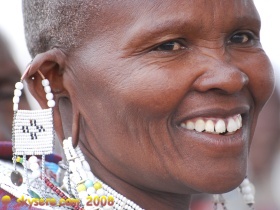
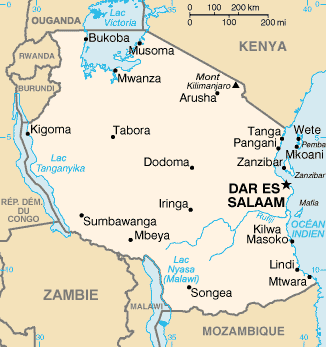
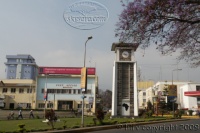
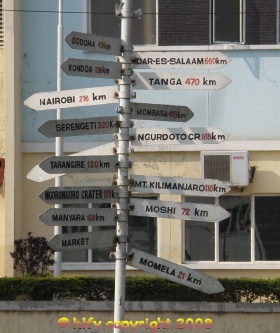
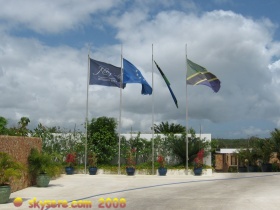
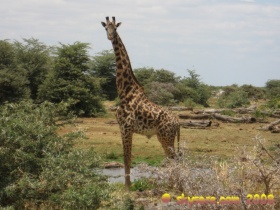
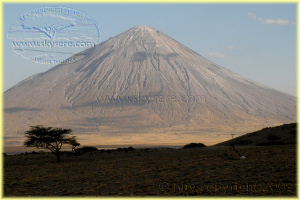
|

